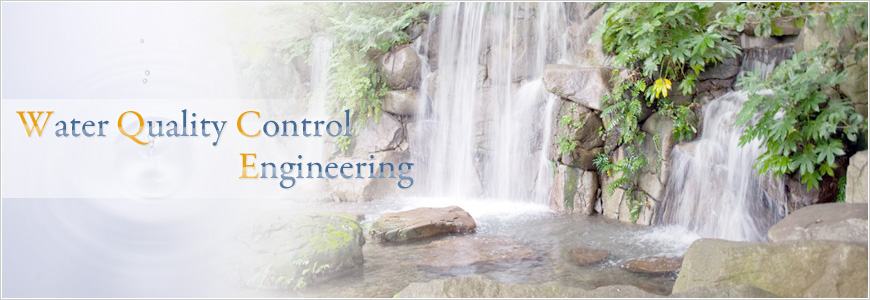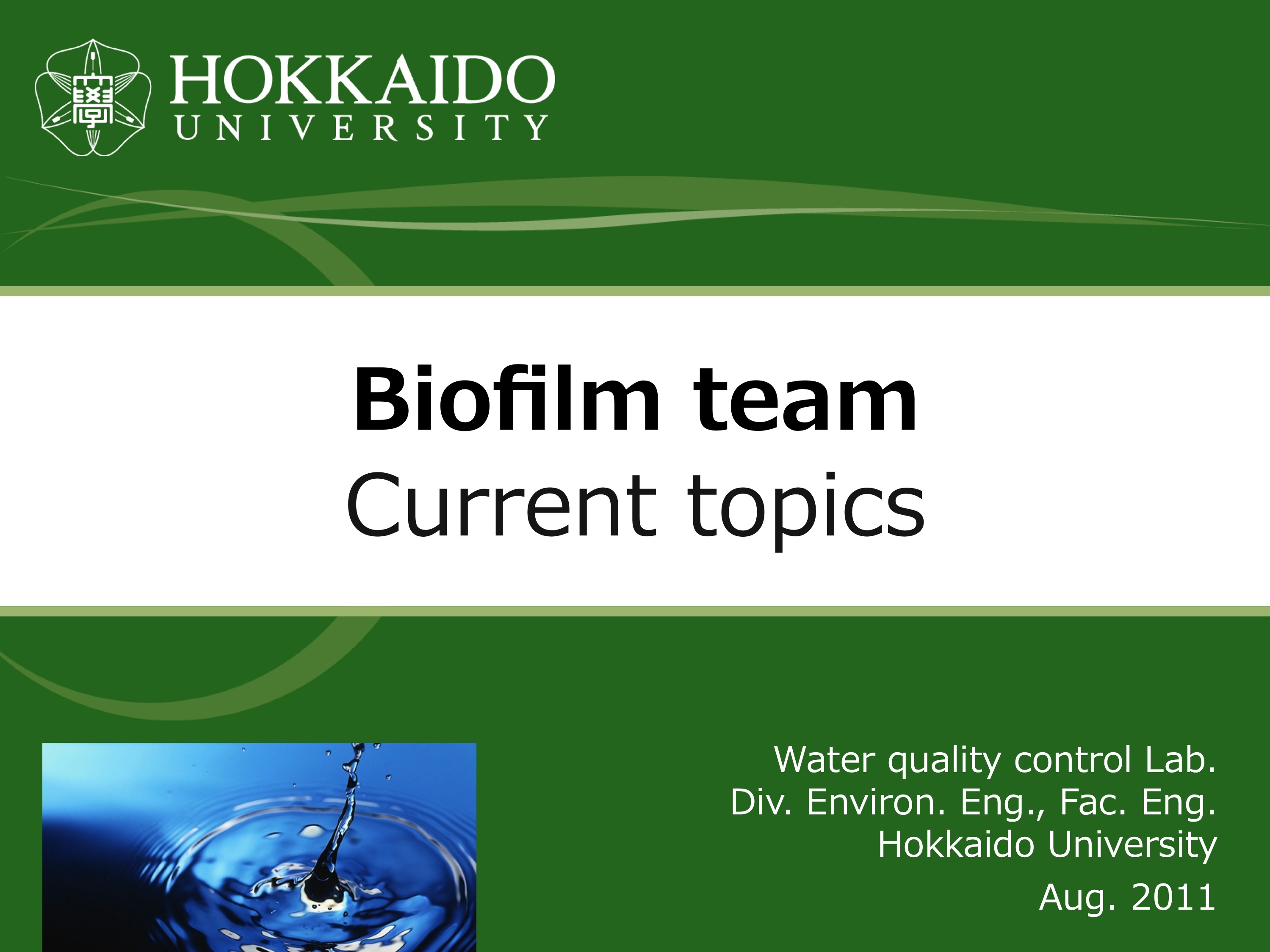Most bacteria live attached to surfaces as sessile communities referred to as biofilms. Biofilms are ubiquitous and cause serious problems for human health and are of concern in medical, environmental, and industrial settings. Corrosion of water pipeline and fouling of membrane filtration plant were now thought to be caused partly by biofilms. Because these biofilms were reported to be resistant to chemicals and shear forces, it is very difficult to remove all the biofilms on the surfaces. To achieve complete removal of the biofilms, it is important to understand the mechanisms of biofilm formation processes. In our laboratory, we are trying to reveal the biofilm formation mechanisms in gene expression level.
Current research topics
Publications(2008-)
- Membrane fouling induced by AHL-mediated soluble microbial product (SMP) formation by fouling-causing bacteria co-cultured with fouling-enhancing bacteria
Ishizaki, S., Sugiyama, R., Okabe, S.
Scientific Reports, 2017, 7, 8482. - Generation of small colony variants in biofilms by Escherichia coli harboring a conjugative F plasmid
Tashiro, Y., Eida, H., Ishii, S., Futamata, H., Okabe, S.
Microbes and Environments, 2017, 32, 40-46. - Membrane fouling potentials and cellular properties of bacteria isolated from fouled membranes in a MBR treating municipal wastewater
Ishizaki, S., Fukushima, T., Ishii S., Okabe, S.
Water Research, 2016, 100, 448-457. - Impacts of hydrophilic colanic acid on bacterial attachment to microfiltration membranes and subsequent membrane biofouling
Yoshida, K., Tashiro, Y., May, T. and Okabe, S.
Water Research, 2015, 76, 33-42. - RelE-mediated dormancy is enhanced at high cell density in Escherichia coli
Tashiro, Y., Kawata, K., Taniuchi, A., Kakinuma, K., May, T., and Okabe, S.
Journal of Bacteriology, 2012, 194(5), 1169-1176. - Enterobactin is required for biofilm development in reduced-genome Escherichia coli
May, T., and Okabe, S.
Environmental Microbiology, 2011, 13(12), 3149-3162. - A polyphasic approach to study eco-physiology of complex multispecies nitrifying biofilms
Okabe, S., Satoh, H., and Kindaichi, T.
Methods in Enzymology, 2011, 496, 163-184. - Exposure of conjugative plasmid carrying Escherichia coli biofilms to male-specific bacteriophages
May, T., Tsuruta, K., and Okabe, S.
The ISME Journal, 2011, 5(4), 771-775. - Characterization and global gene expression of F- phenocopies during Escherichia coli biofilm formation
May, T., Itoh, A., and Okabe, S.
Molecular Genetics and Genomics, 2010, 284, 333-342. - Increased antibiotic resistance of Escherichia coli in mature biofilms
Ito, A., Taniuchi, A., May, T., Kawata, K., and Okabe, S.
Applied and Environmental Microbiology, 2009, 75(12), 4093-4100. - Localized expression profiles of rpoS in Escherichia coli biofilms
Ito, A., May, T., Taniuchi, A., Kawata, K., and Okabe, S.
Biotechnology and Bioengineering, 2009, 103(5), 975-983. - Induction of multidrug resistance mechanism in Escherichia coli biofilms by interplay between tetracycline and ampicillin resistance genes
May, T., Ito, A., and Okabe, S.
Antimicrobial Agents and Chemotherapy, 2009, 53(11), 4628-4639. - A biofilm model for prediction of pollutant transformation in sewers
Jiang, F., Leung, D. H. W., Li, S. Y., Chen, G. H., Okabe, S., and van loosdrecht M. C. M.
Water Research, 2009, 43(13), 3187-3198. - Significance of rpoS during maturation of Escherichia coli biofilms
Ito, A., May, T., Kawata, K., and Okabe, S.
Biotechnology and Bioengineering, 2008, 99(6), 1462-1471. - Escherichia coli harboring a natural IncF conjugative F-plasmid develops complex mature biofilms by stimulating synthesis of colanic acid and curli
May, T., and Okabe, S.
Journal of Bacteriology, 2008, 190(22), 7479-7490.


